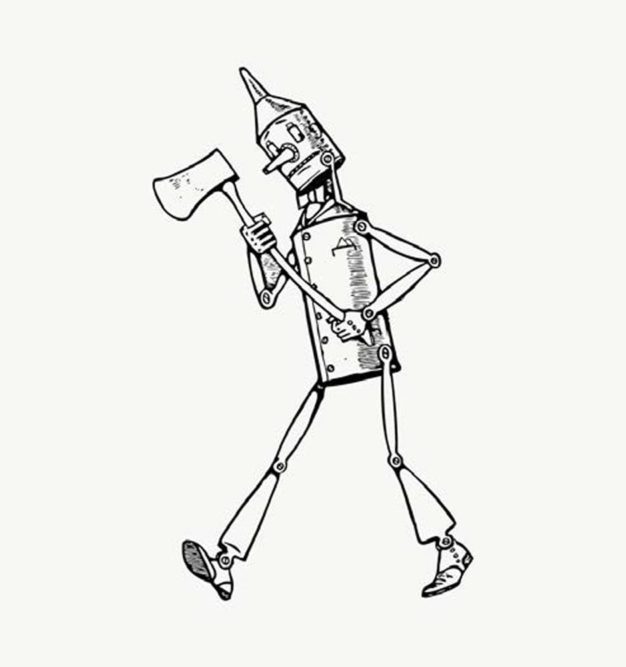The Tin Woodman and Mother Machines
Isn’t the Tin Woodman from The Wizard of Oz a kind of cutting machine? There is a great poem by the poet Gary Snyder titled “Axe Handles” about working with his son to create a new axe handle with an axe—the process reminds him of a line by another poet, Ezra Pound, “When making an axe handle the pattern is not far off.” The poem reminds me of being trained on a Bridgeport mill, years ago, where the operator told me: “You can make a Bridgeport on a Bridgeport.” Of course, that’s not literal but mere shorthand for their versatility. Gear Technology regularly covers machine tools, often referred to as “mother machines” due to their role in producing other machines, which serve as the cornerstone of industrial civilization by cutting or shaping metal. Think of all the gears in the machine tools that not only cut and polish gears but are indispensable for manufacturing a wide range of goods, with nearly every product being created either directly using machine tools or through machines manufactured using these tools.
Anderson Ashburn, in Is New Technology Enough?, aptly captures the interconnectedness of machine tools with various industries, stating, “Thus an automobile is an assembly of metal parts made by machine tools, plastic parts produced by machines made by machine tools, fabric processed on textile machines made by machine tools, rubber processed and molded by equipment made on machine tools, and glass processed by equipment produced by machine tools.”

“The Tin Woodman knew very well he had no heart, and therefore he took great care never to be cruel or unkind to anything.” —L. Frank Baum, The Wonderful Wizard of Oz
The ability to produce machine tools is considered a crucial capability for industrialized nations. It not only grants access to the latest manufacturing technology but also ensures that the production of essential items—wartime or peacetime—is not hindered by a shortage of machine tools.
Historically, the United States held a dominant position in machine tool technology throughout much of the 20th century. However, a sudden and drastic decline occurred in the early 1980s, leading to a significant reduction in annual machine tool shipments, the closure of numerous companies, and a decline in global ranking.
The early machine tool industry played a pivotal role in the American System of Manufactures, contributing to the birth of precision in standardized and interchangeable parts. The rise of the automobile industry further fueled the demand for advanced machine tools. The post-war era witnessed a surge in machine tool production driven by the demand for munitions during World War II.
In the 1960s, industry underwent transformative shifts, including the advent of numerical control (NC). While the U.S. had been a leader in machine tool technology, foreign competition, particularly from Japan, gained momentum. Japanese manufacturers excelled in producing reliable, cost-effective machine tools, outpacing the U.S. in technological adoption and delivery speed.
The ownership landscape of machine tool companies changed in the 1960s with conglomerates acquiring them. This change, coupled with the cyclical nature of the industry, led to a focus on short-term profits and a reluctance to invest in long-term competitiveness. Foreign competition, especially from Japan, further exacerbated the challenges faced by U.S. machine tool builders.
The recession of 1982 marked a critical turning point, and the U.S. machine tool industry faced a rapid decline. Employment in the sector plummeted, companies closed their doors, and the U.S. relinquished its position as the world’s largest machine tool builder.
Today, the U.S. competes in a machine tool market where foreign companies—particularly from Japan, Germany, and China—dominate. But as efforts to re-shore and nearshore U.S. industry evolve, the pendulum is swinging again. The 20th-century decline of the U.S. machine tool industry stands as a complex historical phenomenon shaped by technological shifts, changes in ownership, and global competition, but as AI, robotics, and other automation solutions evolve in the 21st century, they will also transform the scope and utility of machine tools. From an axe making an axe to machines making machines to robots making robots, what will the future hold? What would the Tin Woodman have to say when this January, Elon Musk predicted one billion humanoid robots on Earth by the 2040s?






